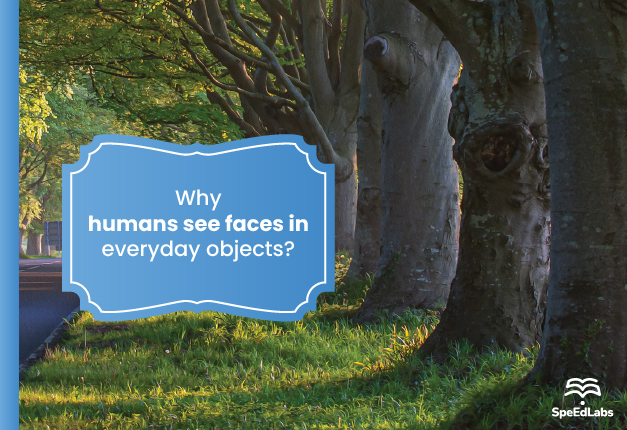You are not alone if you frequently notice faces in inanimate objects around you, such as a house’s scowling visage, a bowling ball’s surprised expression, or an apple’s grimacing surface.
What is Face Pareidolia?
The phenomenon known as “face pareidolia,” in which people perceive faces in inanimate objects, is very human and is related to the way our brains are constructed.
What causes it?
- Face pareidolia, why does it happen? We must consider face perception to respond to this query. Even though every human face is unique, they all have similar features, such as how the eyes and mouth are arranged.
- Our brain is especially sensitive to the fundamental arrangement of features that characterises the human face, which is probably what causes us to focus on pareidolia objects.
- However, recognising the presence of a face is only one aspect of face perception. We must also be able to identify the person and determine from their expression whether they are paying attention to us and whether they are happy or sad.
- This procedure makes use of areas of our brains that are trained to draw out this kind of data from what we see.
What has the recent research revealed?
Researchers have made some progress in their understanding of why “non-human” objects sometimes have “human” faces. A recent study, which was just published in Proceedings of the Royal Society B: Biological Sciences, discovered that the same cognitive processes in our brains that help us recognise and comprehend real human faces also help us recognise fictitious faces in the non-living objects around us.
However, why does the phenomenon even exist? The study’s principal investigator, Professor David Alais of the School of Psychology at the University of Sydney in Australia, said, “We know these objects are not faces, but the perception of a face persists.”
He continued by saying that the facial recognition process happens in a matter of milliseconds. Faces can be recognised very quickly. The brain appears to act in this manner. Using a kind of template-matching process, it will say, “Oh, I’m seeing a face,” if it notices something that appears to have two eyes above a nose above a mouth. Numerous things can fulfil that template and consequently cause a face detection response.
This common occurrence reportedly used to be thought of as a psychotic symptom; experts now recognise it as a common visual perception error.
According to Professor Alais, “from an evolutionary standpoint, it seems that the benefit of never missing a face far outweighs the errors where inanimate objects are perceived as faces.” When something strongly resembles a face, that object, according to the study, is driving your brain’s face detection network.
Researchers think that because our brains are hardwired to see faces in faceless objects, our evolutionary roots may have something to do with this.
In addition to recognising facial characteristics in inanimate objects, our brains also attempt to decipher the emotions these “faces” are trying to convey. We are social beings, so it makes sense that our brains are wired to view reading facial expressions as crucial information. “We have to read the face’s identity and determine its expression. Is this person your ally or enemy? Do they feel joy, sadness, rage, or pain? Explained by Professor Alais.
The facial expression system in your brain is at work when you frown or smile; it processes all faces in the same way, whether they are real or fake.
The experience of judging human-hood in objects will always be fascinating, regardless of how common the phenomenon may be; however, at least we are starting to comprehend the science behind it. Professor Alais stated, “This means that seeing faces in clouds is more than just a kid’s fantasy. It is a parallel experience that it is both a compelling face and an object — two things at once.
Therefore, the next time you see a toast smiling at you, a wooden block looking sad or a chair being sad; you would know why this is happening. In addition, even if your friends happen to see these faces, you can explain to them the reasons well now!
Also published on Medium.
